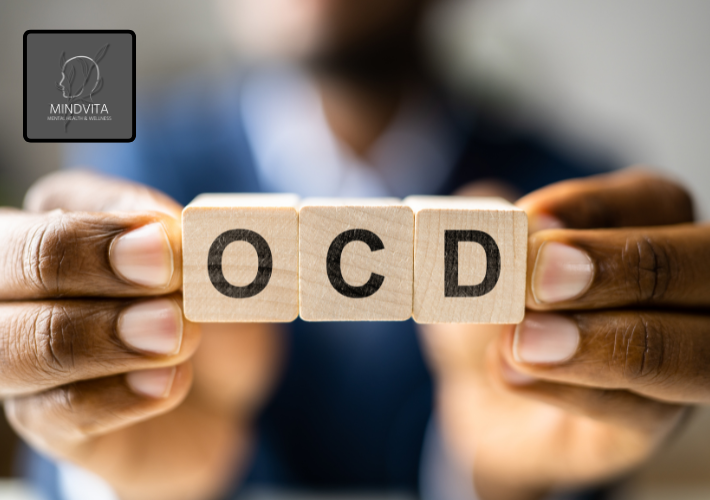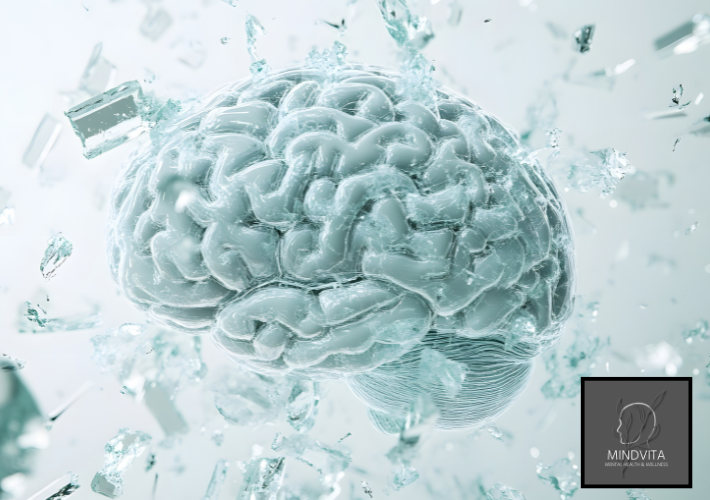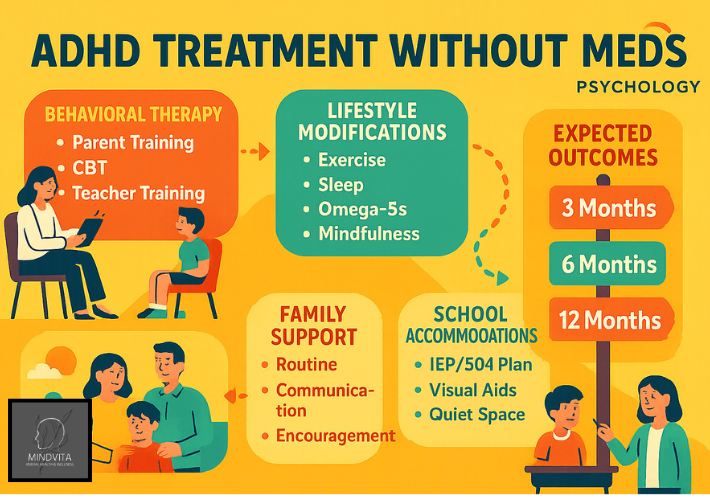It is important to learn the difference between a panic attack vs. a panic attack for any person who has gone through one or both of these conditions. Whereas both can be overwhelming and potentially frightening they differ from each other. Though many people would always use them interchangeably, recognizing their unique characteristics is key in managing symptoms, getting the right treatment and seeing improvement in your mental health.
Anxiety and panic attacks can be quite difficult to differentiate and that is why at MindVita, we make sure to provide our customers with specialized support and services to handle these symptoms. In this blog we will show you the main differences between anxiety attack and panic attacks what signs and symptoms to look out for and provide some useful tips for managing them. Later, we will be diving deep into silent panic attacks the difference between anxiety pain and a heart attack, panic attack types and medication for panic attacks. Let us get started
Understanding the difference between an anxiety attack and a panic attack is essential for effective mental health counseling. This guide explains their key symptoms, causes, and how to manage each condition.
Panic Attack vs. Panic Attack: Key Differences You Should Know
Whereas both anxiety and panic attacks can share a lot of similar symptoms, they are actually different kinds of experiences. Understanding the difference between these two is critical in handling them.
What is an anxiety attack?
Anxiety attacks usually occur in reaction to a situation or some given stressor. Over time it gradually builds up and mostly arises due to fear or worry about some eventuality that is impending. Depending on how the person may react emotionally to the stressor an anxiety attack can either be mild or severe.
Some of the symptoms typically related to anxiety attacks are:
- Tachycardia or increased heart rate
- Shortness of breath
- Restlessness
- Dizziness or lightheaded feeling
- Sweating
- Tense muscles
- Tingling or numbness of the limbs
- Nausea
Anxiety attacks may last from minutes to hours but they often subside when the stressor or trigger is removed.
What is a panic attack?
On the other hand a panic attack strikes out of the blue without warning. Unlike anxiety attacks panic attacks do not have any specific trigger. They may even occur when a person is feeling calm or sometimes even when one is sleeping. Panic attacks are characterized by intense fear or discomfort that frequently peaks in minutes.
Symptoms of a panic attack are more serious and can include the following:
- Sudden overwhelming fear
- Tachycardia or palpitations
- Sweating
- Trembling or shaking
- Shortness of breath
- Chest pain
- Choking sensation
- Dizziness or fainting
- Feeling of losing control
- Detachment from reality
Although panic attacks may subside within 10 to 20 minutes anxiety attack and fear usually remain long after the physical symptoms have passed.

Silent Panic Attacks: The Hidden Danger
A silent panic attack is one in which the physical signs may not be apparent while emotional distress is just as immense. In this way, they are hard to identify for other people and could eventually leave a person who has it feeling isolated and misunderstood.
With a silent panic attack there is no visible shaking, hyperventilation or visible sweating; the person will feel the same intense fear, chest pain, dizziness and shortness of breath. Even when not showing any physical signs of distress the person can feel detached from reality or as if they are dying.
At MindVita we know that silent panic attacks are just as debilitating as evident ones and it is for that reason that we’re here to help you understand them and cope with them effectively. It is very important to seek help whether symptoms are outwardly visible or not if the panic attacks are affecting your life.
Anxiety Pain vs Heart Attack: How to Differentiate
Anxiety pain versus heart attack symptoms is one of the concerns in anxiety attack and panic attacks. Though both conditions have to do with some sort of discomfort or pain in the chest area, the causative factors and nature of their pains differ greatly.
Anxiety pain:
Most times the chest pain one feels during an anxiety attack is due to the fight or flight response. The body releases adrenaline which increases heart rate and blood pressure. Consequently this might cause tightness or pain in the chest that may feel like a heart attack. Anxiety related pain usually is temporary and subsides when the anxiety attack is over.
Some important differences to note:
- The pain is generally sharp or dull and lasts for a very short period of time.
- It can be accompanied by other symptoms, such as dizziness, restlessness or nausea.
- The pain may be triggered by a situation causing either stress or anxiety attack.
Heart Attack:
A heart attack occurs when blood flow to the heart is obstructed by an occlusion including a clot in the coronary arteries. Pain from a heart attack typically is severe, crushing and constant. Other symptoms and signs include the following:
- Pain that radiates to the arms jaw or back.
- Cold sweat
- Shortness of breath
- Dizziness or fainting
- Nausea or vomiting
In case you are not sure whether these are anxiety attacks or a heart attack visit the hospital. MindVita will help you deal with anxiety attack symptoms but if you suspect that you may have a heart attack always take care of your health by seeing a doctor.

Types of Panic Attacks: Understanding the Differences
There are several ways pain attacks can manifest. Identifying the kind of panic attack you may be having, by understanding the different types initiates your actions toward handling them properly.
1. Sudden attacks of panic
These are the most common types of panic attacks. They can occur without warning and take a person by surprise. You feel fine one instant then suddenly very frightened or very uncomfortable. These can occur at any time including when you are engaging in a leisure activity such as watching TV or even when sleeping.
2. Situation related panic attacks
A situational panic attack is triggered through a certain situation or event. For example just the thought of having to make a speech in public or board a plane can trigger a panic attack. More often than not this type of attack is related to a particular phobia or stressor.
3. Trigger panic attacks
A cued panic attack is somewhat like a situational one but the trigger is more specific. It might be a specific object for example a spider or an event that generates persisting fear such as the exam. In that case every time they are exposed to that trigger they will have a panic attack.
4. Limited symptom panic attacks
In a limited symptom panic attack the person has fewer or less intense symptoms compared to a full symptom panic attack. The duration may be shorter and the person does not experience the full spectrum of symptoms.
Knowing the various types of panic attacks will help identify patterns and triggers so you may do what you must to manage or avoid them.
Panic Attack Medication: Finding Relief
While cognitive behavioral therapy and changes in lifestyle can be incredibly effective in managing anxiety and panic attacks medication can be used when it would be beneficial to the patient.
Medications that may be used to control panic attacks include:
1. SSRIs (selective serotonin reuptake inhibitors)
SSRIs are also widely used as first line treatment options for panic attacks and anxiety disorders. They work by adjusting the level of serotonin in the brain which can reduce anxiety and prevent panic attacks from happening. Examples of SSRIs include fluoxetine, sertraline and escitalopram.
2. Benzodiazepines
They help in immediate relief during a panic attack since they act very fast. They act on the central nervous system, calming it, hence decreasing the severity of the attack. However benzodiazepines are prescribed for a very short period because of their addictive potential. Examples of benzodiazepines include alprazolam and lorazepam.
3. SNRIs (Serotonin Norepinephrine Reuptake Inhibitors)
SNRIs, such as duloxetine and venlafaxine work the same way as SSRIs to balance serotonin and norepinephrine. Medications in this class may be useful for anxiety and depression both of which often present comorbid with panic attacks.
4. Beta blockers
Although they are more commonly used for heart conditions, beta blockers can be useful in treating physical symptoms of panic attacks (such as rapid heartbeat and shaking). Medications such as propranolol (Inderal) can be helpful in reducing the physical discomfort of a panic attack especially in situations that involve intense stress.

Coping with anxiety and panic attacks
Coping with anxiety and panic attacks requires a multi pronged approach. Here are some effective strategies that can help:
1. Early recognition of symptoms
Knowing the early signs of anxiety or panic allows you to begin managing your symptoms before they start becoming overwhelming. Note physical changes such as a racing heart and/or shortness of breath and use techniques to relax.
2. Practice relaxation techniques.
Such activities as breathing exercises, meditation, mindfulness and progressive muscle relaxation may be extremely powerful in soothing the nervous system and decreasing the intensity of anxiety or panic attacks.
3. Keep active
Regular exercise decreases anxiety and stress significantly. Such activities as walking, swimming or yoga will help regulate mood and reduce the frequency of panic attacks.
4. Seek help
Speaking with a therapist or counsellor can help you process the emotions and find constructive coping mechanisms. We at MindVita offer individualized therapy which will help you cope with anxiety and panic attacks.
Summary
Whether it’s the difference between panic attacks vs. anxiety attacks, silent panic attacks or anxiety attacks vs. heart attack symptoms the most important thing you can do is seek help. MindVita is dedicated to making sure you get just the care and tools you need to see you through these challenges. If you are ready to start taking control of your mental health contact us today and let us show you ways we can support you in managing anxiety and panic attacks in a healthier and more manageable way.
Frequently Asked Questions
1. What’s the difference between a panic attack and a panic attack?
Anxiety Attack: It is a gradual response to stress and fear usually targeting an associated trigger of some sort.
Panic Attack: A panic attack is sudden unexpected with much more intense physical symptoms.
2. Can silent panic attacks be as dangerous as overt panic attacks?
Yes, silent panic attacks can be just as distressing and damaging even though they may well not be visible on the outside. The emotional distress is immense and needs attention.
3. How will I know whether it’s anxiety pain or a heart attack?
Anxiety pain is usually sharp or dull and temporary while heart attack pain is more severe, crushing and constant. If you are not sure get to the hospital right away.
4. What types of panic attacks are there?
The panic attacks can be unexpected, circumstantial, indicative or limited in symptoms. Knowing the type will help in managing it effectively.
5. What medications may help with panic attacks?
The common medications for panic attacks include SSRIs, benzodiazepines, SNRIs and beta blockers. Consult a doctor to find the right treatment for your symptoms.




